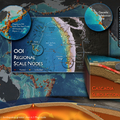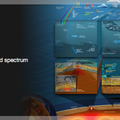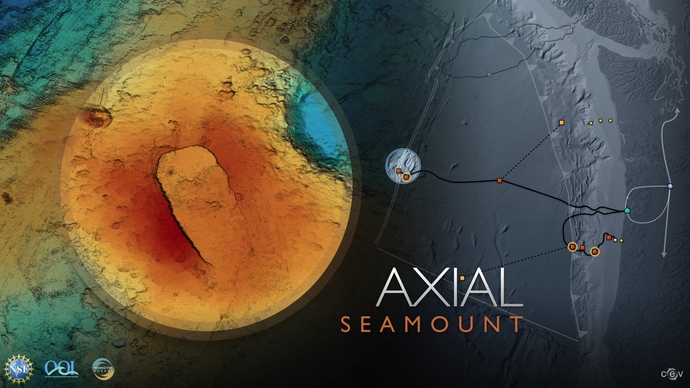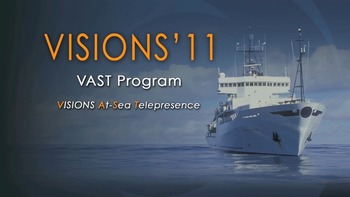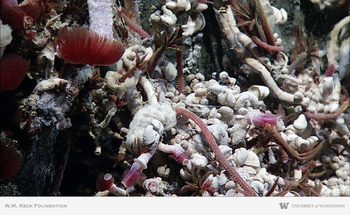This will be the largest single experiment in the global ocean focused on long-term measurements of underwater volcanoes and the life they host.
For 4 billion years the global ocean has responded to and integrated the impacts of submarine volcanism. Here, the Earth, the oceans, and life co-evolved. Some of the most exciting discoveries in past decades have come from studying the relationships between submarine volcanoes, the gases and fluids they release, and the life that thrives in these novel environments. Over 60% of the global volcanism occurs in the oceans with most activity located along mid-ocean ridge spreading centers. This 70,000 km long, volcanically active zone is where tectonic plates spread apart and where new oceanic crust is formed. Pools of molten material and hot rock within the cores of these volcanoes supply heat to hydrothermal hot springs that emit fluids at >400°C and that support some of the most novel life forms on the planet.
Further advances in understanding these systems are increasingly dependent on our ability to collect long-term, high-frequency observations using diverse networks of sensors and samplers. The major volcanic and tectonic events that create the oceanic crust and modulate the fluxes across the seafloor and biological communities are inherently episodic on decadal timescales and are also short-lived. The only way to capture these events is to maintain a long-term monitoring capability at a number of sites with high probability for tectonic or magmatic activity.
Axial Seamount on the Juan de Fuca spreading center is located just one day by ship from the Washington and Oregon coasts. It is the most magmatically robust volcano on the spreading center having erupted in 1998, 2011, and most recently April 2015. It also hosts three active hydrothermal fields (ASHES, CHASM, and CASTLE). It is one of the best-studied volcanoes along the global mid-ocean ridge spreading center and the only site where time-series data are available to examine the evolution of microbes following submarine volcanic eruptions. Axial is one of the main experimental sites on the Cabled Array, and an important site to study the emission of carbon dioxide and other gases into the water column during and following volcanic events.
As part of the OOI Cabled Array, high bandwidth (10 Gb/s) cables and high power (8 kw) are now installed at the summit of Axial Seamount to communicate with and power a diverse array of sensors to monitor the inflation and deflation of the volcano during injection of magma, hydrothermal activity, and the rich biological communities at this site. Real-time high definition video streaming live to shore provides unprecedented views of the tubeworms, crabs, and other animals at the vents. Other sensors include an in situ mass spectrometer, seismometers to monitor earthquake activity, temperature and chemical probes, fluid and DNA samplers, and pressure-tilt meters. This is the largest single experiment in the global ocean focused on long-term measurements of underwater volcanoes.Data are available to the public 24/7/365.

